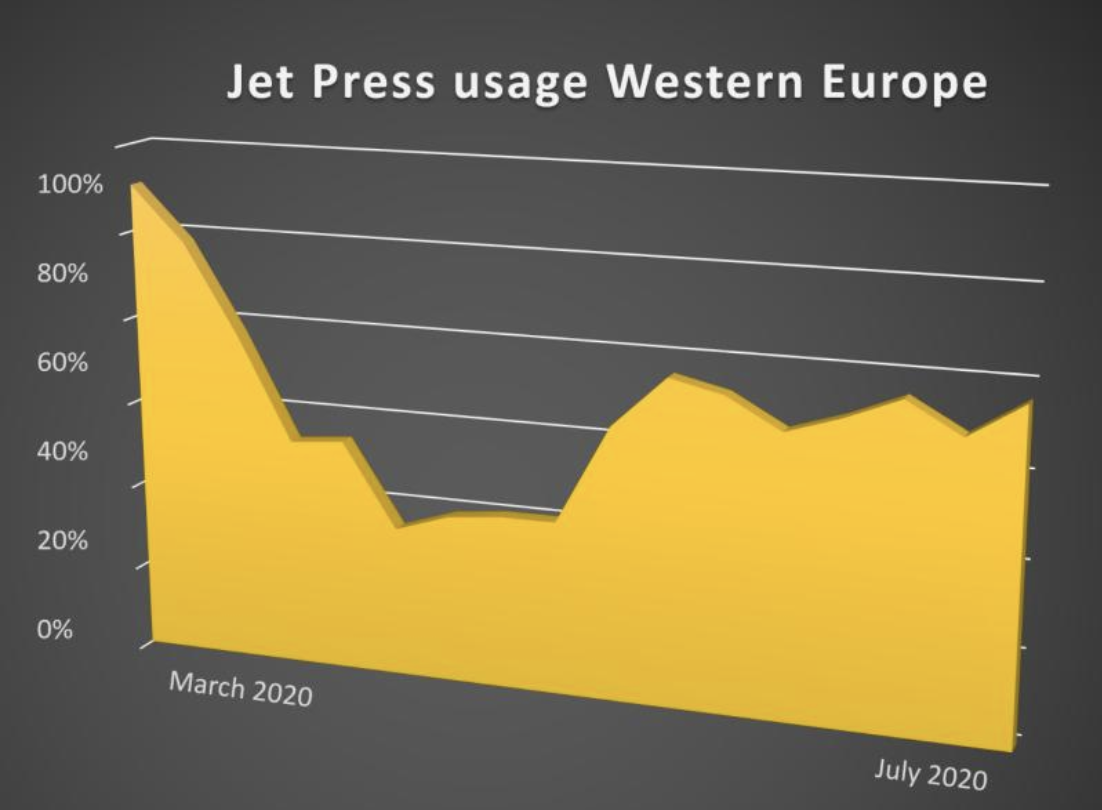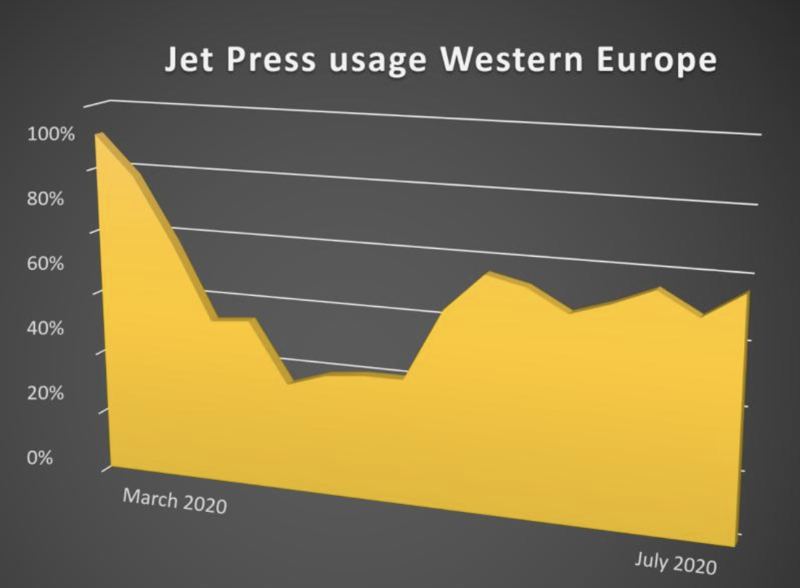In April Printweek revealed that the manufacturer’s Print Media Industry Climate Report had shown that the situation in UK commercial print had crashed to the most severe level of ‘1’, described as “severe impact: multiple print shops stop production completely”.
Heidelberg’s latest stats, for week 26 (the week beginning 22 June), now show that the UK is still classed as “severe impact”, but with an improved score of 2.4.
In a snapshot Heidelberg said it had observed a “steady improvement in commercial print” in the UK.
However, UK commercial print remains in the red zone, with France, Germany, Italy and Poland among the countries now showing much improved ‘green’ ratings.
The UK packaging and labels segment score has nudged up slightly from 5.4 to 5.6, classed as: “minor impact, limited reduction of production.”
Heidelberg's report involves anonymised data from some 5,000 offset presses around the world that are connected to its cloud system for monitoring press performance. The interactive charting extends to about 50 countries.
Mark Stephenson, digital printing and press systems product manager at Fujifilm Graphic Systems EMEA, has also shared some performance data from the firm’s Jet Press users in Western Europe that showed an uptick in activity.
In a post on LinkedIn, Stephenson said: “We've been looking at the latest usage data across our fleet of Jet Press users in Europe and the signs are encouraging. Our chart takes the last week of February as its origin to plot how usage fell to around 30% of the average in April, followed by a recovery to 70% in May that seems to be holding.
“We believe that the next few months will bring us back to pre-Covid levels so watch this space for an update when we have some more data.”
Stephenson said that it was “pretty obvious” that the UK had been harder hit by the virus because of the high number of cases here.













